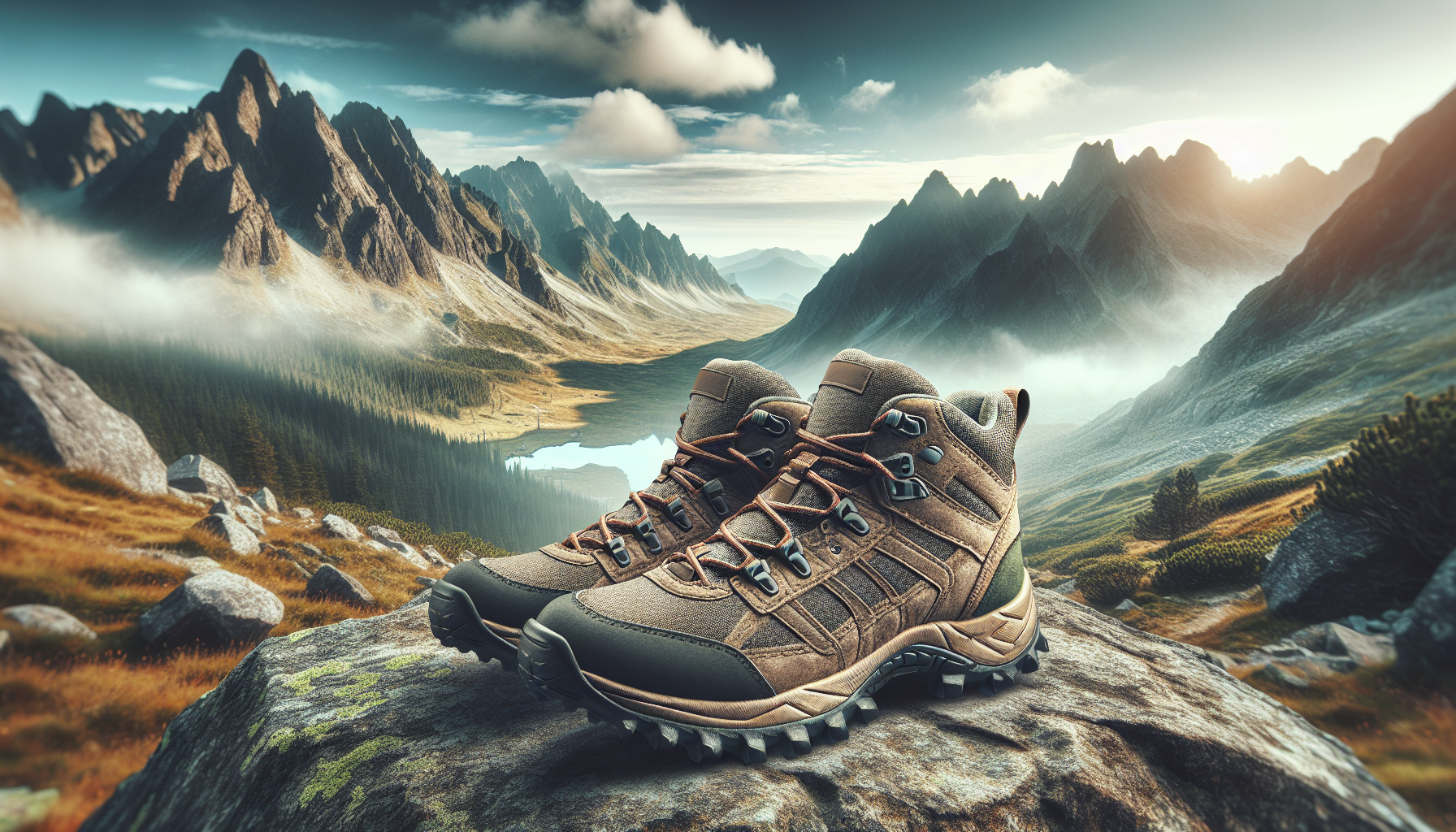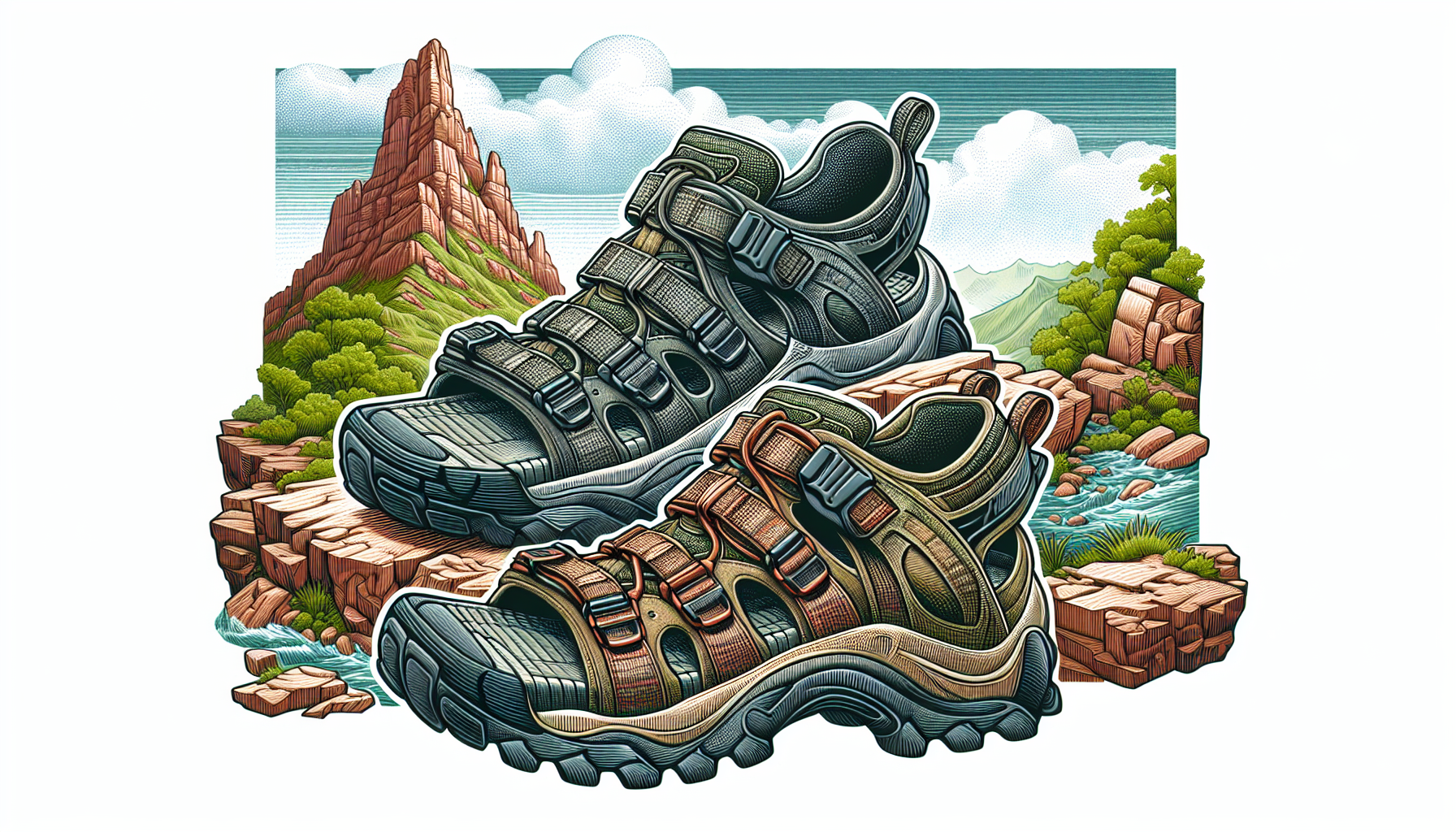Exploring the World of Approach Shoes: A Comprehensive Guide
Approach shoes, a niche category in the world of outdoor footwear, play a crucial role in the lives of climbers, hikers, and outdoor enthusiasts. These specialized shoes combine the rugged durability of hiking boots with the technical precision of rock climbing shoes, making them versatile companions for various outdoor activities. In this in-depth guide, we will delve into the intricacies of approach shoes, exploring their history, design, functionality, and the reasons why they have become a staple in the outdoor community.
The Evolution of Approach Shoes
Approach shoes have a rich history that dates back to the early days of mountaineering. In the past, climbers and mountaineers had to rely on traditional hiking boots or climbing shoes for their approach to the base of a climb. However, these footwear options were often ill-suited for the technical terrain encountered during the approach, leading to discomfort and reduced performance.
Recognizing the need for a specialized shoe that could bridge the gap between hiking and climbing footwear, outdoor brands began developing approach shoes in the late 20th century. These early designs featured sticky rubber soles borrowed from climbing shoes, providing enhanced grip on rocky surfaces, while also incorporating the support and durability of hiking boots.
Over the years, approach shoes have evolved to meet the specific needs of climbers and hikers, with improvements in materials, construction, and design. Modern approach shoes are lightweight, breathable, and offer excellent traction on a variety of surfaces, making them an essential piece of gear for outdoor enthusiasts of all levels.
The Anatomy of Approach Shoes
Approach shoes are typically characterized by their low-cut design, sticky rubber soles, and technical features that enhance performance on challenging terrain. Let’s take a closer look at the key components that make up a typical pair of approach shoes:
1. Upper
The upper of approach shoes is usually made from a combination of leather, synthetic materials, and mesh. This blend of materials provides durability, breathability, and protection from the elements. Many approach shoes also feature a rubber toe cap to shield the toes from rock impacts and abrasions.
2. Midsole
The midsole of approach shoes is designed to provide cushioning and support for long days on the trail. Most approach shoes feature a lightweight EVA (ethylene-vinyl acetate) midsole that offers a balance of comfort and stability. Some models may also incorporate a TPU (thermoplastic polyurethane) shank for added rigidity and protection on rough terrain.
3. Outsole
The outsole of approach shoes is where these shoes truly shine. Made from sticky rubber compounds like Vibram, Stealth C4, or Approach TM, the outsole provides exceptional grip on rock, scree, and other challenging surfaces. The lug pattern on the outsole is designed to offer traction in various directions, allowing for confident foot placement on technical terrain.
4. Lacing System
The lacing system of approach shoes is another important feature that sets them apart from traditional hiking boots. Many approach shoes have a climbing-inspired lacing system that extends towards the toe, allowing for a precise and secure fit. This feature is particularly useful when navigating steep or uneven terrain where a tight fit is essential for stability.
Applications of Approach Shoes
Approach shoes are designed to excel in a wide range of outdoor activities, making them a versatile choice for climbers, hikers, and adventurers. Here are some common applications where approach shoes are a preferred footwear option:
1. Climbing Approaches
As the name suggests, approach shoes are ideal for approaching climbing routes. Whether hiking through rugged terrain or scrambling up rocky slopes, approach shoes provide the grip and support needed to navigate technical approaches safely and efficiently. Climbers appreciate the sticky rubber soles that offer confidence-inspiring traction on slick rock and steep inclines.
2. Hiking and Scrambling
While approach shoes are designed with climbers in mind, they are also well-suited for hiking and scrambling in challenging environments. The low-cut design and sticky outsole make them a versatile option for traversing rocky trails, boulder fields, and exposed ridgelines. The lightweight construction and breathable materials of approach shoes also make them comfortable for long days on the trail.
3. Via Ferrata
Approach shoes are popular among via ferrata enthusiasts due to their combination of climbing performance and hiking comfort. Via ferrata routes often require a mix of climbing and hiking skills, making approach shoes the perfect choice for these adventures. The sticky rubber soles provide the necessary grip for climbing ladders and traversing exposed sections, while the cushioning and support ensure comfort during long approaches.
Choosing the Right Approach Shoes
With a wide range of approach shoes available on the market, choosing the right pair can be a daunting task. Here are some factors to consider when selecting approach shoes that best suit your needs:
1. Fit
The fit of approach shoes is crucial for performance and comfort. Look for a snug but not overly tight fit, as this will provide the stability and precision needed for technical terrain. Consider trying on different brands and models to find the one that matches the shape of your foot and offers the desired level of support.
2. Terrain
Consider the type of terrain you will be navigating with your approach shoes. If you plan to tackle rocky scrambles or technical climbing approaches, opt for a shoe with a sticky rubber outsole and a climbing-inspired lacing system. For long hikes on varied trails, a more cushioned midsole and durable upper may be preferable.
3. Breathability
Approach shoes are often worn in warm and humid conditions, so choose a pair that offers adequate breathability to keep your feet cool and dry. Look for models with mesh panels, breathable linings, and moisture-wicking materials to ensure comfort during extended wear.
4. Weight
While approach shoes are generally lighter than hiking boots, the weight of the shoe can still impact your performance on long approaches. Consider the trade-off between weight and durability, opting for a balance that suits your activity level and desired comfort.
Expert Opinions on Approach Shoes
To gain further insights into the world of approach shoes, we reached out to seasoned climbers and outdoor experts for their opinions on this specialized footwear. Here’s what they had to say:
“Approach shoes are a game-changer for climbers who want to move quickly and confidently through rugged terrain. The sticky rubber soles provide an edge on slippery rocks, while the lightweight construction allows for nimble footwork on technical approaches.” – Emily, Climbing Instructor
“I always recommend approach shoes to my clients who are looking to venture into via ferrata routes. The combination of climbing performance and hiking comfort makes them the perfect choice for these challenging adventures. Plus, the durability and support of approach shoes ensure that your feet are protected on long days in the mountains.” – Alex, Mountain Guide
Common Misconceptions About Approach Shoes
Despite their popularity among outdoor enthusiasts, approach shoes are sometimes subject to misconceptions and myths. Let’s debunk some common misconceptions about approach shoes:
1. Approach shoes are only for climbers.
While approach shoes are designed with climbers in mind, they are also well-suited for hikers, backpackers, and outdoor adventurers who require a versatile and durable shoe for challenging terrain. Approach shoes offer the grip and support needed for technical approaches, making them a valuable addition to any outdoor enthusiast’s gear closet.
2. Approach shoes are not suitable for long hikes.
Contrary to this belief, approach shoes are capable of providing comfort and support for long hikes on varied terrain. The cushioning, stability, and breathability of approach shoes make them a reliable option for extended wear, allowing you to tackle miles of trails with confidence.
Conclusion
To wrap things up, approach shoes are a unique footwear category that blends the best of hiking boots and climbing shoes. With their sticky rubber soles, technical features, and versatile design, approach shoes have become an essential tool for climbers, hikers, and outdoor enthusiasts seeking performance and comfort in challenging environments. Whether you’re tackling a climbing approach, scrambling up a rocky ridge, or embarking on a via ferrata adventure, approach shoes are sure to enhance your experience and help you navigate with confidence.
As you embark on your next outdoor adventure, consider the benefits of adding a pair of approach shoes to your gear arsenal. Their combination of grip, support, and comfort make them a valuable companion for any journey into the wild. So lace up your approach shoes, hit the trail, and discover the freedom and thrill of exploring the great outdoors.




